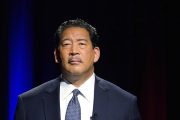In recent weeks, the American news media have carried numerous reports on the inability of the federal government to stop the flow of firearms from the United States to Mexico. For example, a recent story from the Associated Press repeated the findings from a 2008 study by The Brookings Institution which declared that “2,000 American guns are smuggled into Mexico each day.”
The AP noted that the White House announced in March 2009 that interdicting these guns would be a priority; however: “Since then, Customs and Border Protection officers — who usually spend their days checking people and cars coming into the U.S. — have teamed up with Border Patrol agents and, sometimes, sheriff’s deputies in border communities to scrutinize travelers leaving American soil. They have made little progress.”
The unwillingness of the federal government to deal with the problem of sealing America’s porous southern border is hardly “news”; it is a well-known fact that illegal aliens and narcotics flow into the United States, and that firearms flow south into Mexico. However, the fact that the current crisis in Mexico proves the impossibility of gun control serving as an effective check on crime is often left out of coverage lamenting the ease with which smugglers carry firearms into Mexico. The carnage of the past few years proves true the old expression: “When guns are outlawed, only outlaws will have guns.”
One aspect of the cross-border smuggling which has been largely ignored is the apparent inability of those same Customs and Border Protection officers to seize the drug money which is flowing right alongside the guns on the trip from the United States into Mexico. An article by Edwin Mora for CNSNews.com cites government statistics demonstrating that less than one percent of the drug money flowing across the border is seized by federal officials. According to CNSNews:
The Customs and Border Protection (CBP) agency over the last two years has seized about $65 million along the southwest border in illicit bulk cash being smuggled out of the United States. That’s less than 1 percent of the estimated $18-$39 billion in drug-trafficking proceeds ferreted across the border, a government report states.
According to a Mar. 9 audit by the Government Accountability Office (GAO), from March 2009 through Feb. 22, 2011, the CBP seized $67 million in illicit cash leaving this country, of which 97 percent (about $65 million) was confiscated along the U.S.-Mexico border.
The virtually unimpeded flow of drugs, money, arms, and people across the border are all means by which one may document a simple fact: The federal government is simply failing to take reasonable measures to control the national borders. Rep. Lamar Smith (R–Texas) recently wrote in an editorial for the Houston Chronicle:
The Government Accountability Office (GAO) has declared that less than half of the U.S.-Mexico border is under “operational control.” This is an astounding piece of disappointing news. The GAO study found that of the nearly 2,000 miles separating the U.S. and Mexico, only 44 percent are under the “operational control” of the Border Patrol and only 15 percent are under “full control.”
The GAO report contradicts recent remarks made by Department of Homeland Security Secretary Janet Napolitano that the Obama administration’s “border security approach is working.” Administration officials are either unaware of the massive holes in security along the southern border or are misleading the American people. The administration has a duty to secure the border and protect the American people. Forty-four percent is a failing grade.
If the goal is securing our borders and defending the American people from all enemies “foreign and domestic,” it is hard to find a single statistic associated with the border crisis which does not constitute a “failing grade.”
There are, of course, many within the political and economic elite in the United States who do not view the degradation of America’s southern border as a “failure,” but as one step on the way to a fundamental realignment of the nations of North America into a single union, the North American Union (NAU). This NAU agenda is neither “Republican,” nor “Democrat,” and thus the change of administration between the two political parties does not meaningfully impede its progress. As Daniel Sayani wrote recently for The New American:
The Council on Foreign Relations (CFR) 2005 report “Building a North American Community” not only clearly outlined how George W. Bush’s lax policy on illegal immigration served to build the foundation of a North American Union, but also revealed the extent of Republican influence toward the creation of the NAU. Republican task force members who authored the blueprint for the NAU include Heidi Cruz (Economic Director for the Western Hemisphere at the National Security Council under Condoleezza Rice), Richard Falkenrath (Bush’s Deputy Homeland Security Adviser and fellow at the neoconservative Brookings Institution), and Carla Hills (a former Assistant Attorney General and U.S. Trade Representative under Presidents Ford and George H.W. Bush).
The solution to the border crisis is found, in part, in defeating the drive for the NAU — a union which the American people clearly do not want, but which many of their elected leaders are bent on imposing on them. A crucial component in the struggle to defend every aspect of American sovereignty is the battle for the border.
Photo: Bill Newell, special agent in charge of the ATF Phoenix, behind a cache of seized weapons that were to be smuggled into Mexico for use by a drug cartel: AP Image



